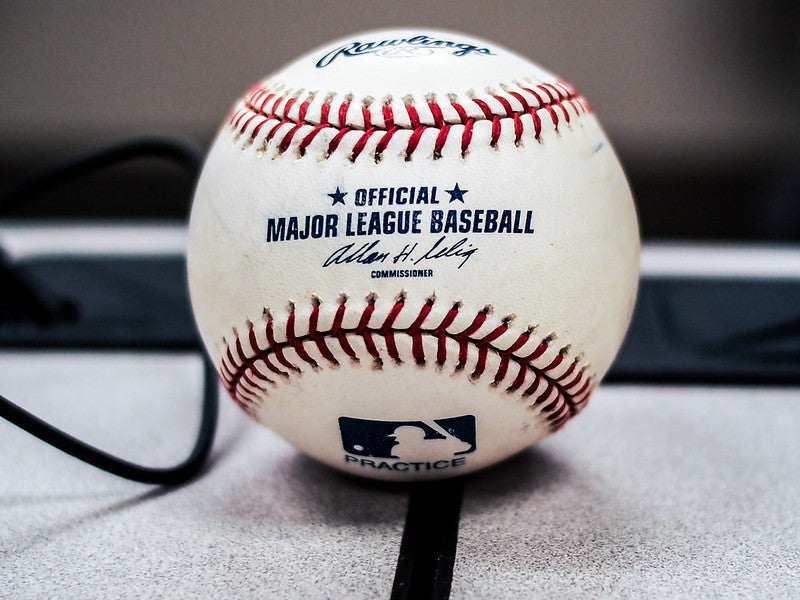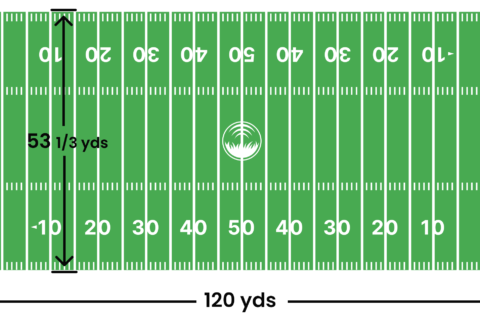An average Major League Baseball (MLB) game uses about 84 to 120 baseballs. This depends on various factors during the game.
Baseballs are essential to every MLB game. The number of baseballs used can vary, but on average, it ranges from 84 to 120 per game. Many factors contribute to this high usage. Balls get scuffed, hit into the stands, or deemed unfit for play by umpires.
Pitchers often request new balls, and foul balls can end up in the crowd. Each game demands a fresh supply to maintain quality and fairness. Understanding this helps fans appreciate the logistics behind a baseball game. It also highlights the meticulous planning required to ensure every game runs smoothly.
The Magic Number: Baseballs Used In An Mlb Game
Have you ever wondered how many baseballs are used in an average Major League Baseball (MLB) game? The number might surprise you. Each game requires a significant number of baseballs to ensure smooth play. Let’s dive into the magic number and explore why so many baseballs are needed.
A Peek Into The Dugout
Each MLB game starts with a fresh batch of baseballs. On average, teams prepare around 120 baseballs for every game. This number can vary depending on different factors. Factors include weather conditions and the nature of the game.
During the game, baseballs are constantly replaced. A ball might be swapped after a pitch hits the dirt. It can also be replaced if it gets scuffed or damaged. Umpires ensure the ball is in perfect condition. This guarantees fair play and player safety.
Comparing Past And Present
Baseball has evolved over the years. In the past, fewer baseballs were used in games. Decades ago, a single baseball might last several innings. The game was slower and less intense.
Today, the pace of the game is faster. Modern players hit harder and pitch faster. This increased intensity means baseballs wear out quicker. As a result, more baseballs are needed per game.
| Era | Average Baseballs Used |
|---|---|
| 1950s | 30-40 |
| 2000s | 70-80 |
| Today | 120+ |
Understanding the number of baseballs used gives insight into the sport’s evolution. It highlights the game’s increasing demands and the measures taken to maintain its integrity.

Credit: www.nytimes.com
Behind The Scenes: Sourcing And Prepping The Baseballs
Baseballs used in MLB games have a special journey. They are sourced and prepped with great care. Each ball’s journey involves unique processes and attention to detail.
From Factory To Field
Baseballs start their journey in a factory. Raw materials like leather and rubber are gathered. Skilled workers stitch the balls by hand. Each ball has 108 stitches. Quality control is strict to ensure perfection. Once approved, balls are shipped to MLB teams.
A table of the baseball’s journey:
| Step | Details |
|---|---|
| Materials Sourcing | Leather, rubber, and yarn are gathered. |
| Manufacturing | Workers stitch 108 stitches by hand. |
| Quality Control | Each ball is checked for quality. |
| Shipping | Approved balls are shipped to teams. |
The Art Of Rubbing Mud
Before a game, baseballs go through a unique prep. Rubbing mud is applied to the balls. This mud comes from a secret location. It makes the balls less slippery. The mud is applied by hand, ensuring even coverage. This process helps pitchers grip the ball better.
Steps involved in rubbing mud:
- Gather special mud.
- Rub mud onto each ball.
- Ensure even coverage.
- Check the grip of the ball.
Each baseball is treated with care. This ensures fair play in every game.
Game Time: How Baseballs Meet Their Fate
Baseball games use many balls. These balls have short lives. They face many challenges during a game. Let’s explore how baseballs meet their fate.
Hits, Homeruns, And Foul Balls
Every hit impacts a baseball. A single hit can damage it. When batters hit homeruns, balls fly out of the park. These balls are lost forever. Foul balls also leave the field. Fans often keep these balls. Each foul ball means a new one is needed.
The Life Cycle Of A Game Ball
A baseball’s life starts in the umpire’s hands. It might be used for a pitch. If the pitch is hit, its journey begins. Balls are replaced often. They get dirty or damaged quickly. The umpire inspects each ball. If it’s not perfect, it’s replaced.
| Event | Impact on Ball |
|---|---|
| Hit | May cause scuffs or dirt |
| Homerun | Ball leaves park, lost forever |
| Foul Ball | Often kept by fans |
During a game, many balls are used. Some estimates suggest 120 balls per game. Each ball’s life is short but exciting.

Credit: ecosports.com
Statistical Wonders: Unbelievable Baseball Usage Facts
Have you ever wondered how many baseballs are used in an average Major League Baseball (MLB) game? The answer might surprise you. The number of baseballs used per game is staggering. Let’s dive into the statistical wonders of baseball usage in MLB games.
Record-breaking Figures
In a single MLB game, about 120 baseballs are used on average. This number can vary depending on various factors. For instance, foul balls, home runs, and pitches that hit the dirt all lead to ball replacements. Some games even use up to 144 baseballs!
- Each game: ~120 baseballs
- Highest recorded: ~144 baseballs
These figures show the incredible usage and turnover of baseballs in each game.
Cost Implications For Teams
The cost of these baseballs adds up quickly. On average, a single baseball costs around $6. Multiply that by the number of baseballs used, and the cost per game becomes significant.
| Item | Cost | Usage per Game | Total Cost per Game |
|---|---|---|---|
| Baseball | $6 | 120 | $720 |
| Highest Usage | $6 | 144 | $864 |
For a full season, the costs can be astronomical. Each team plays 81 home games in a season. This means teams spend thousands on baseballs alone.
- Single game: $720
- Full season: $58,320
This gives a glimpse into the financial side of baseball usage in MLB.
Environmental Impact: What Happens To All Those Baseballs?
Every Major League Baseball (MLB) game uses many baseballs. The average game uses about 120 baseballs. This large number raises concerns about its environmental impact. What happens to all those baseballs after the game?
Recycling And Reuse Strategies
MLB has strategies for recycling and reusing baseballs. Some balls are used for practice sessions. Others are given to fans as souvenirs. This helps reduce waste and promotes recycling.
Many teams donate used baseballs to schools and community programs. This promotes sports and ensures that the balls are reused. Some baseballs are even repurposed into new products.
| Reuse Strategy | Details |
|---|---|
| Practice Sessions | Used baseballs help players practice. |
| Fan Souvenirs | Fans get used baseballs as keepsakes. |
| Community Programs | Donated baseballs support local sports. |
| Repurposing | Old baseballs become new products. |
The Sustainability Question
The question of sustainability is important. Baseballs are made from leather, rubber, and yarn. These materials have environmental impacts. The production and disposal of baseballs contribute to waste.
Sustainable practices can help reduce this impact. Using eco-friendly materials is one option. Recycling programs can also help. MLB is working to improve its sustainability efforts.
- Eco-friendly materials can reduce waste.
- Recycling programs help manage used baseballs.
- MLB aims to improve sustainability.
These efforts show that MLB is committed to the environment. Sustainable practices help protect our planet. This ensures that baseball can be enjoyed for generations.
Fan Interaction: Souvenirs And More
Baseball is more than just a game. It’s an experience that fans cherish. Souvenirs play a big role in this experience. Among these, game balls are the most prized. Fans love to catch these balls. The thrill of catching a ball is unmatched.
Catching A Game Ball
Fans bring their gloves to games hoping to catch a ball. This is a cherished tradition. Every game uses about 100 balls. Many of these end up in the stands. Catching a ball is a dream come true for many fans. It’s a memory they will never forget.
Players often toss balls to fans. This usually happens between innings. Foul balls and home runs also end up with fans. Each caught ball tells a unique story. It becomes a treasured souvenir.
Auctioning For A Cause
Some game balls are used for charity auctions. These balls often have historic value. They might be from a record-breaking game. Or signed by a famous player. These balls can raise a lot of money for good causes.
Teams often hold these auctions online. Fans bid for these special balls. The money raised goes to various charities. This makes the game even more special. Fans get a unique piece of history. And they help make a difference.
Here is a table showing the types of game balls and their significance:
| Type of Game Ball | Significance |
|---|---|
| Home Run Ball | Hit into the stands, often caught by fans |
| Foul Ball | Hit into the stands, can be caught by fans |
| Pitcher’s First Strikeout Ball | Significant for milestone achievements |
- Catching a game ball is thrilling for fans.
- Players often toss balls to the crowd.
- Charity auctions raise money with historic game balls.
Innovation In The Game: Reducing Baseball Waste
Major League Baseball (MLB) games use a lot of baseballs. Each game can use up to 120 balls. This creates a lot of waste. Reducing this waste is important for the environment. Innovation can help solve this problem.
Technological Advances
Technology is helping reduce baseball waste. One way is through smart baseballs. These balls last longer than regular ones. They have sensors inside them. The sensors help track the ball’s condition. This means fewer balls are wasted.
Another advance is better stitching. New machines stitch baseballs more tightly. This makes the balls more durable. Durable balls do not need to be replaced as often. This reduces the number of balls used in each game.
Recycling is also a big part of reducing waste. Some teams now recycle old baseballs. They use the materials to make new balls. This helps cut down on waste and saves resources.
Future Prospects
The future looks bright for reducing baseball waste. New materials are being tested. These materials could make baseballs even more durable. This would mean even fewer balls are needed for each game.
There are also ideas for using biodegradable materials. These materials break down naturally. They do not harm the environment. Using them could make baseballs more eco-friendly.
Teams are also looking at ways to reuse balls. One idea is to use them in practice sessions. This would give each ball a longer life. It would also reduce the number of new balls needed.
| Technology | Benefit |
|---|---|
| Smart Baseballs | Longer lifespan, fewer replacements |
| Better Stitching | Increased durability |
| Recycling | Less waste, resource savings |
- Smart baseballs track condition.
- Better stitching increases ball life.
- Recycling helps save resources.
These innovations show how technology can help. Reducing baseball waste is good for the game and the planet.
Credit: www.quora.com
A Deep Dive Into The Numbers: Analyzing Usage Over A Season
Ever wondered how many baseballs are used in an average Major League Baseball (MLB) game? The numbers might surprise you. Each game requires a significant amount of baseballs. This usage can vary from team to team and across different sports. Let’s explore these figures in detail.
Team By Team Breakdown
Each MLB team has its own average for baseball usage. Here is a breakdown:
| Team | Average Baseballs Used Per Game | Estimated Total Over a Season |
|---|---|---|
| New York Yankees | 100 | 16,200 |
| Boston Red Sox | 95 | 15,390 |
| Los Angeles Dodgers | 90 | 14,580 |
| Chicago Cubs | 88 | 14,256 |
These numbers reflect an average game. The total usage over a season reveals a staggering figure.
Comparative Analysis With Other Sports
How does baseball compare with other sports in terms of equipment usage? Let’s look at some numbers:
- Baseball: Uses around 100 balls per game.
- Basketball: Uses around 3 balls per game.
- Football: Uses around 12 balls per game.
- Soccer: Uses around 5 balls per game.
Clearly, baseball stands out with its high number of balls used. Each game demands fresh balls to maintain quality. Other sports tend to reuse their balls more frequently.
Understanding these numbers gives insight into the logistics of professional sports. The extensive usage in baseball highlights its unique requirements. Knowing these details can enhance your appreciation of the game.
Conclusion
Understanding the number of baseballs used in an MLB game offers insight into the sport’s dynamics. On average, about 120 balls are utilized per game. This high number ensures the game maintains its pace and quality. Knowing this detail enhances your appreciation for the meticulous preparation involved in baseball.








